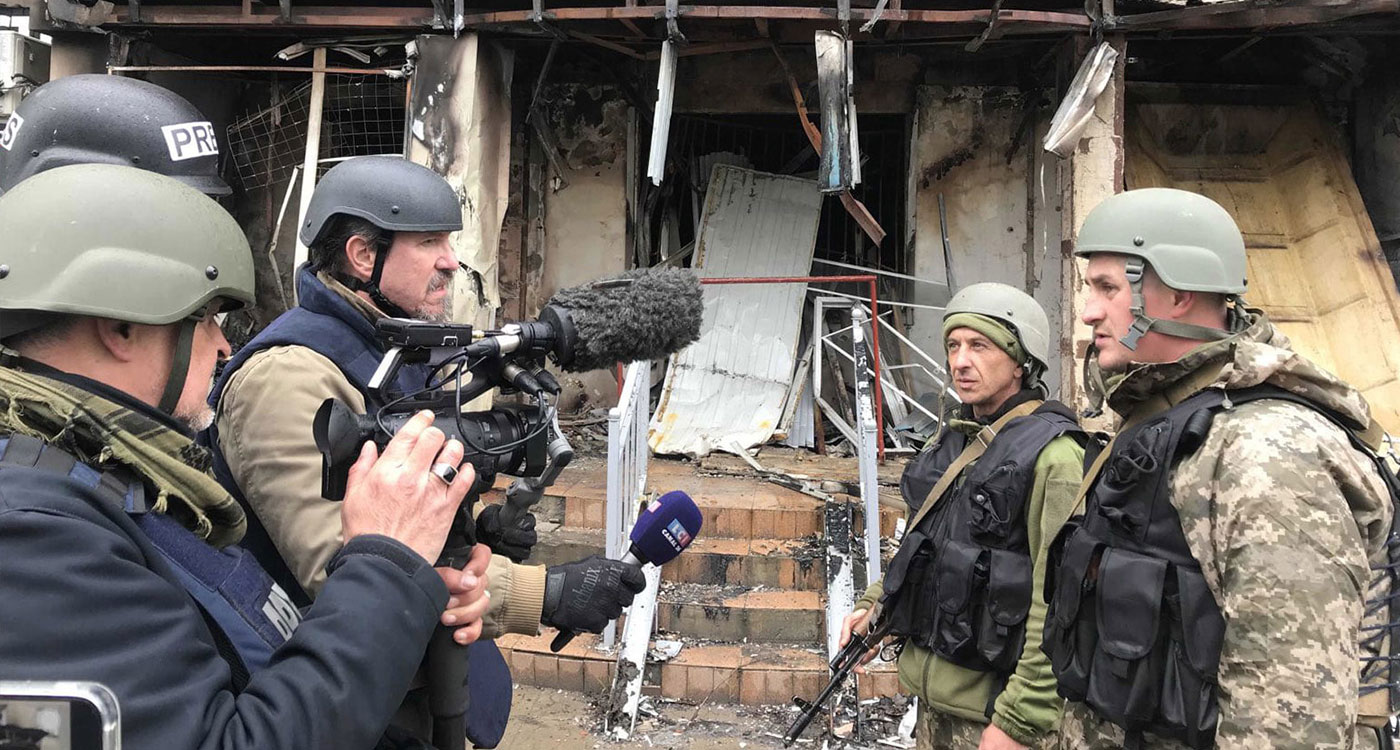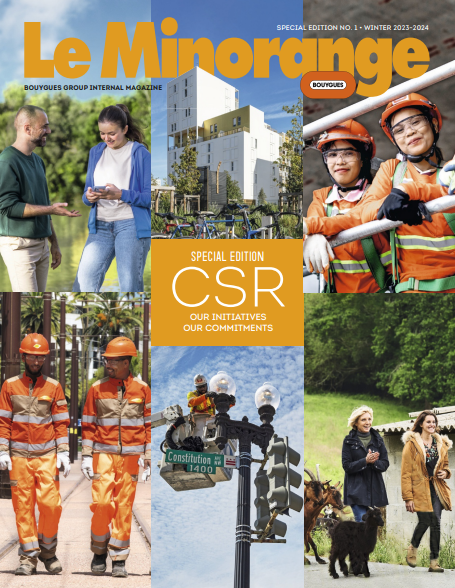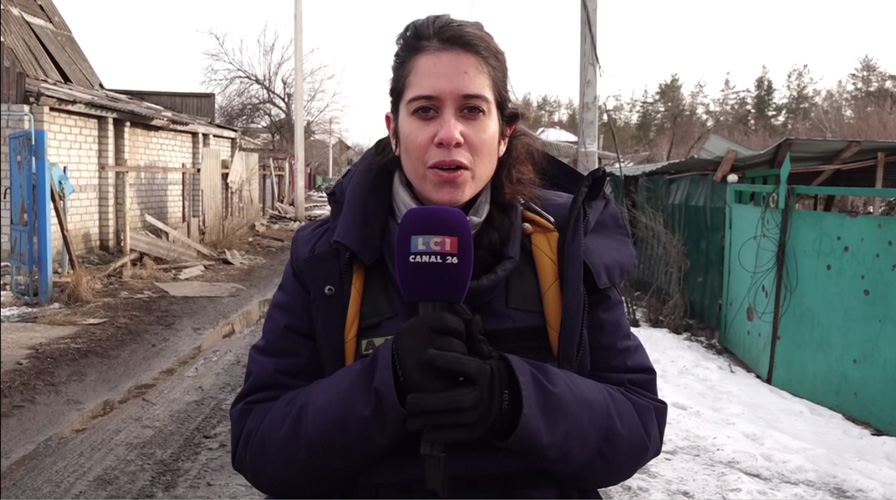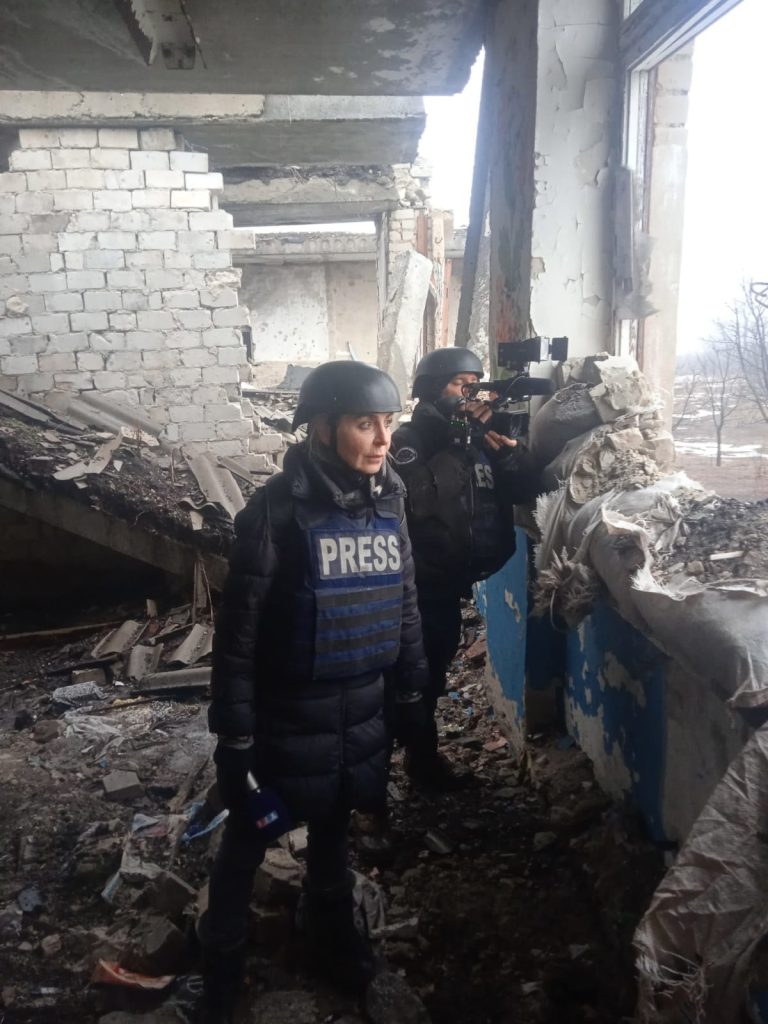
Protection in conflict zones
To protect its photojournalists, TF1’s General Affairs and Security Department has developed a comprehensive approach that includes physical training and psychological support throughout the assignments of these news professionals in conflict zones.
by Laura Flanchet

DISCOVER OUR MINORANGE SPECIAL EDITION
SPECIAL CSR

“Do not fight your fear. Use it to take the right actions in the field“, advises Yann Bessette, safety and security director at TF1. Harsh but vital words spoken during a briefing in August 2023 of two photojournalists Loïc Gorgibus and Frédéric Petit who might be heading off to Ukraine in the coming weeks. “This briefing is part of a program set up in cooperation with the News Department’s management to support photojournalists before, during, and after their mission ”, says Bessette.
Protecting employees while on assignment, managing crises, and dealing with threats during live broadcasts are the daily tasks of the Safety and Security Department.
13,219
trips
(France & abroad)
1,454
employees sent into the field
77
countries
Train and equip
Various training programs are organized to protect photojournalists like a five-day internship at a commando training camp in Collioure, organised by the French armed forces, or an in-house training programme organised at TF1where they learn the basic rules of self-protection in war zones. “This two-day program is divided into four modules: pre-departure instructions, rules for protection in dangerous areas, stress management – this module is conducted by a physician – and first aid in the field,” explains training manager Sania El Hakkaoui. The photojournalists also receive a first-aid kit. They need to know how to apply a tourniquet and compression bandages to treat injuries promptly before medical help arrives.
Twice a year, there is a meeting of the Personal Protection Equipment (PPE) commission, which is made up of the Medical Department and managers from the News and General Affairs and Security departments. “It determines, based on the country and level of danger, the types of PPE that photojournalists must carry with them,” says Yann Bessette. “We are also working on implementing training in nuclear, radiological, biological, and chemical risks, which are increasingly present, especially in the war between Russia and Ukraine.”


“Do not fight your fear. Use it to take the right actions in the field.”
Safety and security director at TF1
Adapting to current events
Frédéric Petit has worked as a photojournalist at TF1 for 36 years. He has covered events in France and around the world – nights of rioting, the “yellow vests” demonstrations in France, genocide in Rwanda, the war in Afghanistan, and many others. “I have observed real recognition by TF1’s management and employees that photojournalists need support,” notes Petit. The violent events of recent years in France have led to greater protection for the news teams.
Since September 2022, more than 500 security agents have been deployed across the country, compared with fewer than one hundred in the previous year.
The security department at TF1 is working to identify and contract suppliers of security services for its employees, even in regions as contentious as the Donbass, for example.
psycholoGICAL FOLLOW-UP
Medical follow-up is provided to photojournalists when they return from the field, including the possibility of consulting a trauma specialist to talk about their experiences. “The first time I saw a trauma specialist, I was hesitant because I was afraid of coming across as a liar,” says Petit. “I eventually opened up and talked for an hour and a half. The new generation of photojournalists is better equipped to deal with traumas because they are receiving more psychological support.”
For twenty-five-year-old Loïc Gorgibus, the assignment in Ukraine will be his first in a conflict zone. During the security briefing, Bessette stresses a crucial point: “Besides the trauma specialist, you can identify a person you trust as someone to confide in.” When it comes to safety, whether physical or psychological, TF1 leaves nothing to chance.